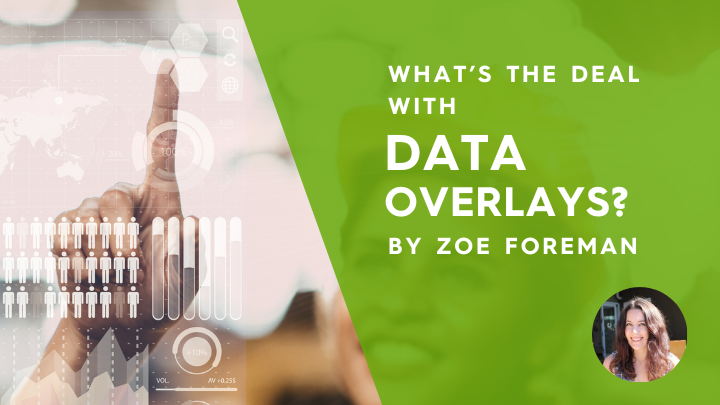
One of the most common challenges that the businesses we work with come across, regardless of industry, is the disconnect between daily operations and their energy and environmental footprint. Traditional methods, where data on production, energy use, and emissions, are kept in separate silos, simply don’t provide the full picture.
Without bringing these data streams together, modern businesses are trying to complete a puzzle with only a fraction of the pieces. Without those pieces and the picture they complete, business leaders are missing out on significant opportunities: in cost cutting, in emission reduction, and in strategic decision making.
This is where the power of integrated data overlays comes into play.
What are data overlays (and why should you care)?
Conceptually, data overlays are straightforward. Measure the energy consumption of a given machine in a given time period. Measure its production output in the same time period. Compare the two, and you’ll uncover how efficient that machine is: how much energy it uses to generate a given output. You can then use that data to estimate costs, run times, and other basic information. Simple.
However, this is only scratching the surface of data overlays. In fact, the bulk of the most interesting insights only appear when you take a more granular look into the data.
Take, for instance, a sector that makes heavy use of data overlays: manufacturing. Data overlays allow operations managers to uncover which of their machines are most efficient, and it can also uncover utility use spikes that indicate issues like unnecessary runtime, off-schedule operations, even maintenance issues.
For example, one of our clients using the data overlays built into their BraveGen Utility dashboards were able to uncover that some of their machines were still consuming power after hours and even during weekends. This revelation allowed them to investigate that usage, reduce it to almost zero, and improve standard operating procedures to ensure this occurs in future.
That same client was also looking at changing their production machinery and was able to use the production/energy overlay information to uncover which of their existing equipment was underperforming and may need to be replaced.
Then, there’s scheduling. If you can get the data down to the hourly level, you can see the impact that different scheduling has on different pieces of equipment and on the operations of a particular building as a whole. You can see how long it takes for a piece of equipment to warm up and at what level of consumption it’s most efficient, avoiding the need to “overjuice” the machinery, reducing its effective lifetime and unnecessarily increasing utility costs.
However, let’s not get caught up in thinking that it’s only manufacturing that can benefit from data overlays. The power of data overlays is not only in the insights, but also in its flexibility. Comparing two data sets isn’t limited by the need to have a strict input and output. With the right technology, you can compare practically any two data sets – assuming you have the data.
- Real estate can compare energy use versus lettable area to understand the ‘efficiency’ of tenanted spaces.
- Entertainment venues can compare energy use versus the number of seats sold in a given time period.
- And for an especially out-there use case: businesses could compare energy use in office buildings against revenue generation or full time employee numbers to investigate if it’s time to expand into a new building.
Manufacturing is the poster child for the benefits of data overlays, but practically every industry can benefit from those efficiency insights.
How to ‘do’ data overlays
Hopefully you’re now sold on the idea of data overlays. Which brings the next challenge: how to actually “do” them.
Data overlays aren’t new. They’ve probably been around since the industrial revolution, if not earlier. What is new, however, is the accessibility of the technology required to really make full use of them.
Technically, it’s possible to create these kind of overlays with nothing more than spreadsheet software. However, the only thing that’s a constant across any industry with data overlay potential is that time is limited, and nobody wants to get stuck in a pivot table.
Analysing the data in this way takes far too much time. This is one of the primary barriers that stop business from benefiting from these insights. Then, you have the data issue: you can’t analyse data that you don’t have, and if you only gather data once in a blue moon, the insights you glean will be out of date or nonsensical by the time you actually want to use them.
That’s why one of the main pieces of advice I give people when they want to use data overlays is to get the right technology involved. By the “right” technology, I mean software and/or hardware that can a) ingest the data you need, b) quickly and regularly), and then c) analyse it for you automatically so it’s there for you to analyse when you need.
Nowadays, there’s more data than ever available. The hurdle is translating those complex data sets into something meaningful as well as accurate. In short? Data overlays are great, but you must have the right software to manage them.
Summary
Data overlays provide crucial insights around efficiency for businesses, regardless of industry. With the right setup, businesses can quickly identify problems with energy overconsumption, futureproof and better choose their next efficiency investment, and create more efficient processes and scheduling.
However, the key is to be able to access the right data, at frequent enough intervals, and in a manner that’s understandable by humans – not just by spreadsheets. I invite you, regardless of your industry, to consider how you might use data overlays in your business – and what you might be able to do with the insights gleaned from software like BraveGen Utility.



